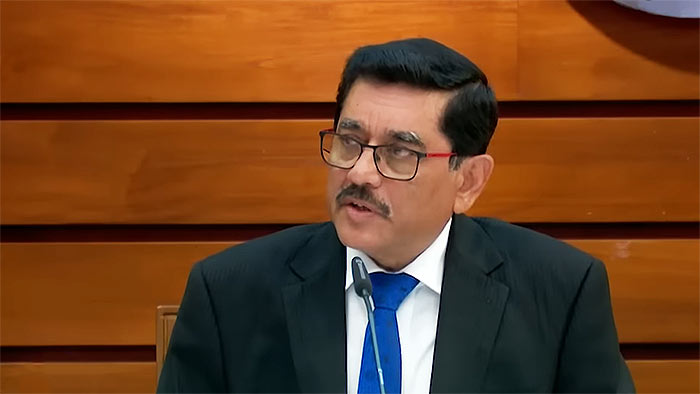Sri Lanka Says Inflation Nears Peak, Easing Pressure on Economy

Dr. Nandalal Weerasinghe. (Photo: CBSL)
Sri Lanka’s 70% inflation is hitting its peak as crippling shortages ease and bailout funds look within reach, yet it’s far from putting the central bank governor at ease.
“We think we are seeing the peak of inflation,” central bank governor Nandalal Weerasinghe said in an interview in Colombo on Thursday. “There’s still some way to go,” he said on fixing the island nation’s economy and its finances.
The governor, a career central banker who six months ago raised the policy rate by a staggering 700 basis points as among his first acts to stabilize a nation rocked by a debt crisis, said the monetary authority’s rate decisions will remain data driven and forward looking. The central bank has paused after 9.5 percentage points of hikes this year that took the key rate to 15.5% as inflation bolted to become Asia’s fastest.
“It will be turning around and if that is lower in October, as we expect, then we can see that trend will continue,” he said of the price gains.
“We need to assess not only the inflation number, but the outlook – the expectations, monetary expansion, the growth outlook and also level of reserve and exchange rate policy,” Weeransinghe said on the policy rate, giving no clue whether the central bank will go on an extended pause on rates.
The government has made some progress in restoring the health of the $81 billion economy, with basic goods like food and fuel becoming more available while authorities relentlessly pursue debt restructuring. A deal with creditors is key to receiving the International Monetary Fund’s $2.9 billion bailout, and unlock more funding.
Sri Lanka plans to engage again with lenders within the next two weeks to seal a deal that would make debt sustainable. The nation has about $12.6 billion in outstanding bonds owed to global funds; it owes roughly an equivalent amount to bilateral creditors and multilateral lenders.
The island nation’s economy faced its worst economic crisis since its independence as a debt default and political turmoil hammered finances and also led to paralyzing shortages. Sri Lanka’s stocks, currencies and bonds went into a tailspin earlier this year. Output shrank the most in two years in the April-June period and is expected to stay the course in the current fiscal year.
‘Too Long’
The nation was now in a situation where it can manage “without new additional bridging finance until we go to the IMF board. This is why we think we have done our part,” he said. Weerasinghe doesn’t want the crisis dragging for “too long” and his priority is “to provide for essential imports for the people.”
Assistance from friendly countries, repurposed funds from multilateral lenders, exports, remittances and import curbs have helped steady Sri Lanka’s finances in the short run. The nation’s forex stockpile rose to $1.78 billion at end-September, from $1.72 billion the previous month. Additional financing is needed to build up reserves, he said.
Other Highlights
“The signals are that China is ready to support Sri Lanka,” the governor said on debt restructuring, “We still don’t know in what way what kind of stance, as an important creditor, or kind of treatment they would like to offer us. At a technical and higher political level, dialogue is going on”
“Going forward we want to make sure that nobody can change the monetary policy framework depending on governor’s or any individual’s thinking,” he said, saying that a shift to a fixed exchange rate in the past led to the deterioration in reserves. “This is where we lost our control and then inflation went over the roof.”
(Bloomberg)
Latest Headlines in Sri Lanka
- Former CPC Chairman Dhammika Ranatunga granted bail by Colombo Court December 15, 2025
- Sri Lanka condemns Bondi Beach attack in Australia December 15, 2025
- Sri Lanka estimates USD 400 Million for railway reconstruction after Cyclone Ditwah December 15, 2025
- Large-scale drug trafficker arrested in Wattala with 21 kg of cannabis December 15, 2025
- Tragedy at Bondi Beach: Mass shooting at Jewish festival kills 15, injures dozens December 15, 2025


